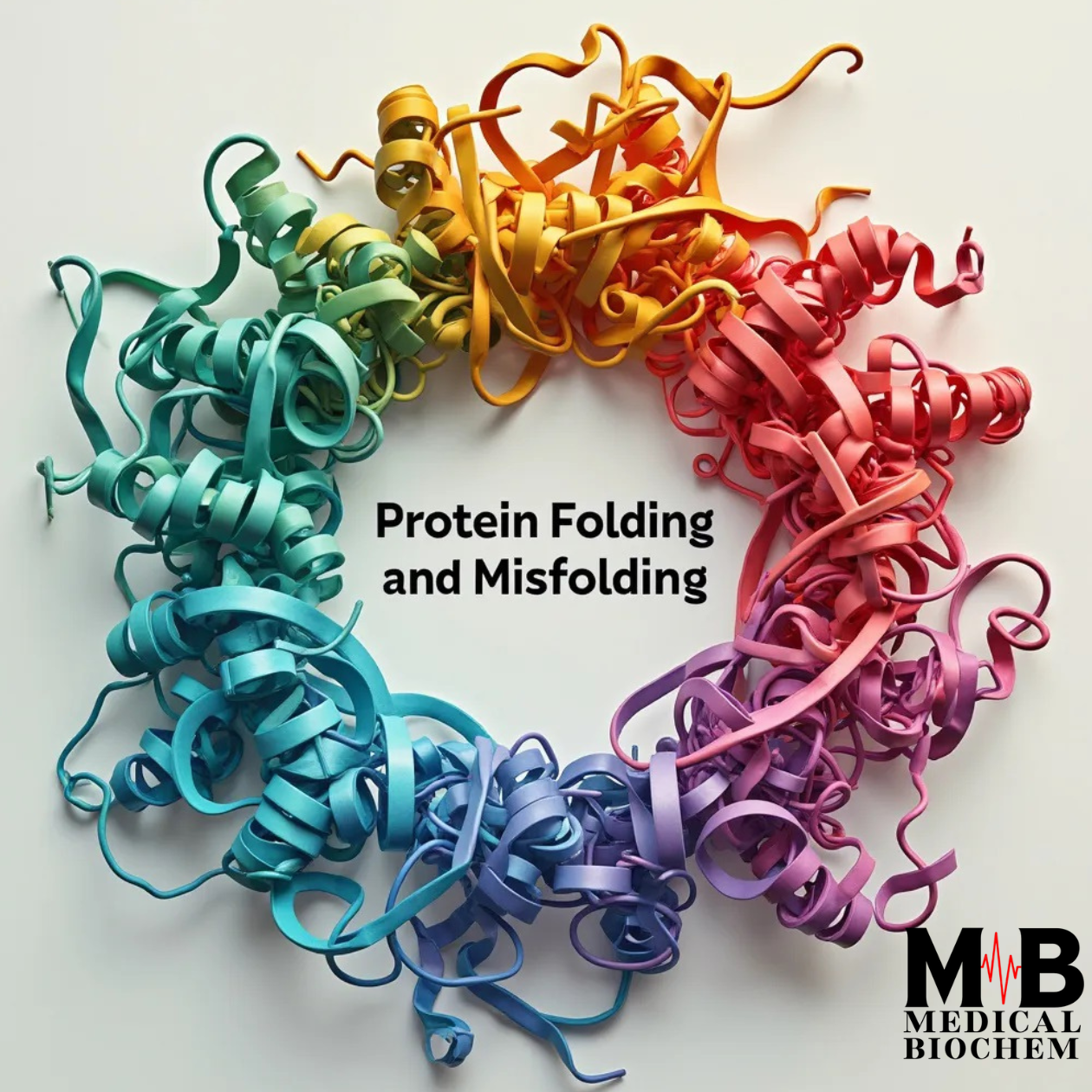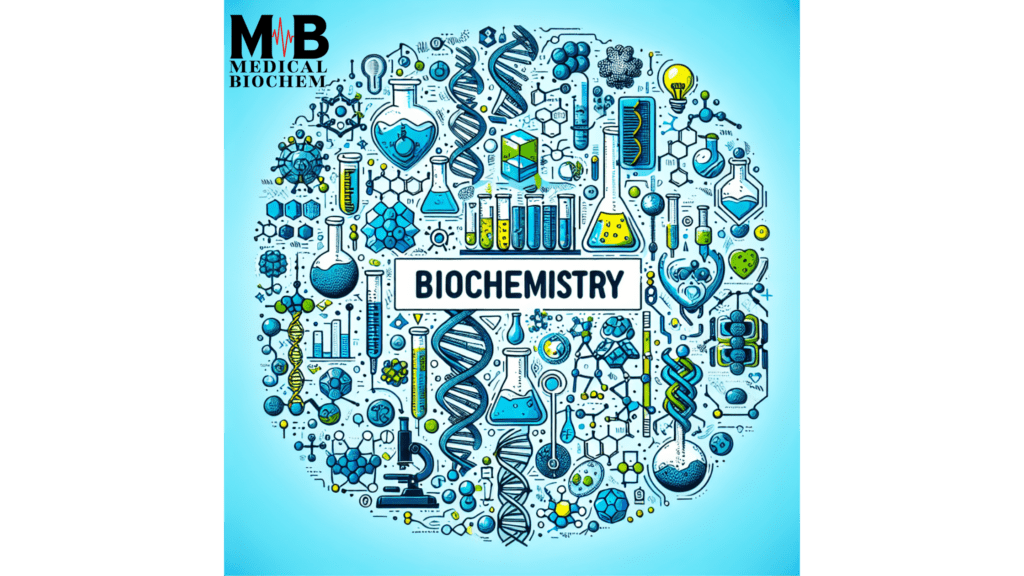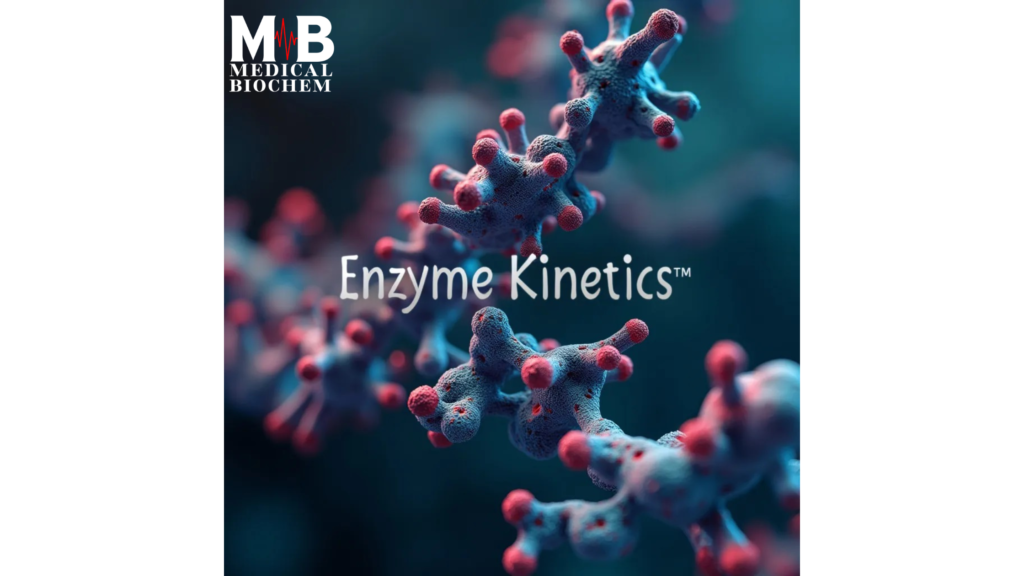Protein Folding and Misfolding: Structures, Mechanisms, and Associated Diseases
Proteins are the building blocks of life. Their diverse roles within organisms—from providing structural support to regulating biochemical processes—are crucial for maintaining life as we know it. Proteins’ functionality is directly tied to their structure. This structure depends on the proteins’ correct folding. In this blog post, we’ll explore the fundamental concepts of protein folding, the mechanisms involved, the consequences of protein misfolding, and how these processes relate to neurodegenerative diseases such as Alzheimer’s.

Table of Contents
What is Protein Folding?
Protein folding is a complex process through which a polypeptide chain transforms from a linear sequence of amino acids into a well-defined three-dimensional structure. The sequence of amino acids determines how the protein folds, and this folded structure is vital for the protein’s biological function.
Each protein has a specific three-dimensional shape, known as its native conformation, which enables it to interact precisely with other biomolecules. Imagine a lock and key; if the protein doesn’t assume the right shape, it cannot fit the “lock” to perform its function effectively.
The Stages of Protein Folding
- Primary Structure: This refers to the sequence of amino acids in a polypeptide chain. The unique sequence is the first determinant of the protein’s final shape.
- Secondary Structure: Proteins typically fold into common structures like α-helices and β-pleated sheets, held together by hydrogen bonds. These formations stabilize the overall structure.
- Tertiary Structure: This stage involves the folding of secondary structures. This leads to an intricate three-dimensional form. This figure’s stability is ensured through interactions. These interactions include disulfide bonds and hydrophobic contacts.
- Quaternary Structure: Some proteins consist of multiple polypeptide chains. In such cases, the quarternary structure describes the assembly of these chains into a single functional unit.
Chaperones: The Helpers of Protein Folding
Molecular chaperones play a crucial role in assisting protein folding. The function of these proteins is to prevent unwarranted engagements during the protein folding stage. Protein chaperones prevent misfolding and clumping by safeguarding specific areas until the protein reaches its natural conformation.
Chaperonin proteins, GroEL in bacteria is an example of the intricate chaperone proteins. They encapsulate other proteins. Provide an isolated environment for proper folding. These mechanisms help prevent folding errors that could lead to dysfunctional proteins.
Protein Misfolding: When Things Go Wrong
Protein misfolding occurs when a protein fails to attain its correct conformation. Misfolded proteins often have altered or dysfunctional properties and, in some cases, can lead to severe diseases. Mutations, environmental stress, or errors in the folding process itself can cause misfolding.
Consequences of Protein Misfolding
When a protein misfolds, it may become prone to aggregation. Proteins can form amyloid fibrils when they aggregate. These fibrils are linked to neurodegenerative diseases.
- Alzheimer’s Disease: A significant feature of Alzheimer’s is the accumulation of misfolded β-amyloid plaques in the brain. These plaques disrupt communication between neurons, ultimately causing memory loss and cognitive decline.
- Parkinson’s Disease: Misfolded α-synuclein proteins lead to the formation of Lewy bodies, which are linked to the motor symptoms characteristic of Parkinson’s.
- Huntington’s Disease: In this genetic disorder, misfolded huntingtin proteins aggregate, leading to neuronal damage.
Misfolded proteins can evade the cell’s natural degradation mechanisms, like the ubiquitin-proteasome system, and form toxic aggregates that disrupt cellular functions.
Mechanisms of Protein Misfolding and Disease
The relationship between protein misfolding and disease highlights the importance of the intricate protein-folding process. Factors such as genetic mutations, oxidative stress, and environmental changes may increase the likelihood of a protein misfolding. For instance, mutations in the APP gene can increase the propensity of β-amyloid peptides to misfold, enhancing the risk of Alzheimer’s disease.
The Role of Aggregation
Protein aggregation is a hallmark of many neurodegenerative diseases. Aggregates are typically resistant to degradation, allowing them to accumulate within cells. The aggregation of misfolded proteins can trigger neuroinflammation and cellular stress, contributing to neuronal death.
Interestingly, aggregates can spread between cells, propagating the misfolded form to neighboring proteins. This prion-like behavior is observed in disorders like Alzheimer’s and Parkinson’s, where the misfolded protein acts as a template, encouraging the normal proteins to adopt a similar, toxic conformation.
Study Protein Folding and Misfolding
Studying protein folding and misfolding is essential to understanding both normal biological functions and disease mechanisms. Scientists use several techniques to investigate these processes:
- X-ray Crystallography: This method helps determine the three-dimensional structure of folded proteins, providing insights into how their structure relates to function.
- Nuclear Magnetic Resonance (NMR) Spectroscopy: NMR allows researchers to study proteins in solutions, giving them a better understanding of how folding dynamics work under physiological conditions.
- Cryo-Electron Microscopy (Cryo-EM): Cryo-EM is a powerful tool for visualizing protein structures at near-atomic resolution, especially useful for studying protein aggregates.
Therapeutic Approaches to Misfolding Diseases
Given the implications of protein misfolding in disease, researchers have explored various therapeutic strategies:
- Chaperone Therapy: This involves enhancing the function of molecular chaperones to assist in the proper folding or refolding of misfolded proteins.
- Inhibition of Aggregation: Compounds that inhibit the aggregation of misfolded proteins may help in slowing disease progression. For example, monoclonal antibodies are being developed to target β-amyloid plaques in Alzheimer’s patients.
- Enhancing Degradation: Stimulating the cell’s natural protein degradation systems, like the ubiquitin-proteasome pathway, is another approach. This helps clear misfolded proteins before they aggregate.
- Gene Therapy: For diseases caused by genetic mutations, gene therapy offers potential by correcting the underlying genetic defect that leads to protein misfolding.
The Future of Protein Folding Research
The study of protein folding and misfolding is advancing rapidly. Understanding the precise mechanisms of folding and misfolding provides critical insights into developing effective therapies for diseases such as Alzheimer’s, Parkinson’s, and Huntington’s. Recent breakthroughs in machine learning, particularly with tools like AlphaFold, have significantly improved our ability to predict protein structures. Such advancements could open new pathways for drug discovery and precision medicine.
AlphaFold, developed by DeepMind, uses artificial intelligence to predict protein structures with remarkable accuracy. This technology can provide models of folded proteins, offering new avenues to understand misfolding and aggregation processes, ultimately contributing to more effective treatments.
Conclusion
Protein folding and misfolding is a fundamental biological process, that determines how a protein can function within the body. When this process goes wrong, it can have dire consequences, including debilitating neurodegenerative diseases like Alzheimer’s and Parkinson’s. While much progress has been made in understanding these processes, the complex nature of protein folding and misfolding continues to challenge researchers.
However, with the advent of advanced research methods and artificial intelligence, we are making significant strides toward deciphering these mysteries. The hope is that understanding the intricacies of protein misfolding will eventually lead to effective treatments, improving the quality of life for millions affected by these conditions.
If you’re fascinated by the intricacies of protein folding and misfolding and its implications for human health, consider exploring more about cutting-edge research techniques like Cryo-EM and AlphaFold. Stay informed, follow the latest advancements, and help support awareness of neurodegenerative diseases. Subscribe to our blog for more in-depth articles on the science that shapes our understanding of life and disease!


